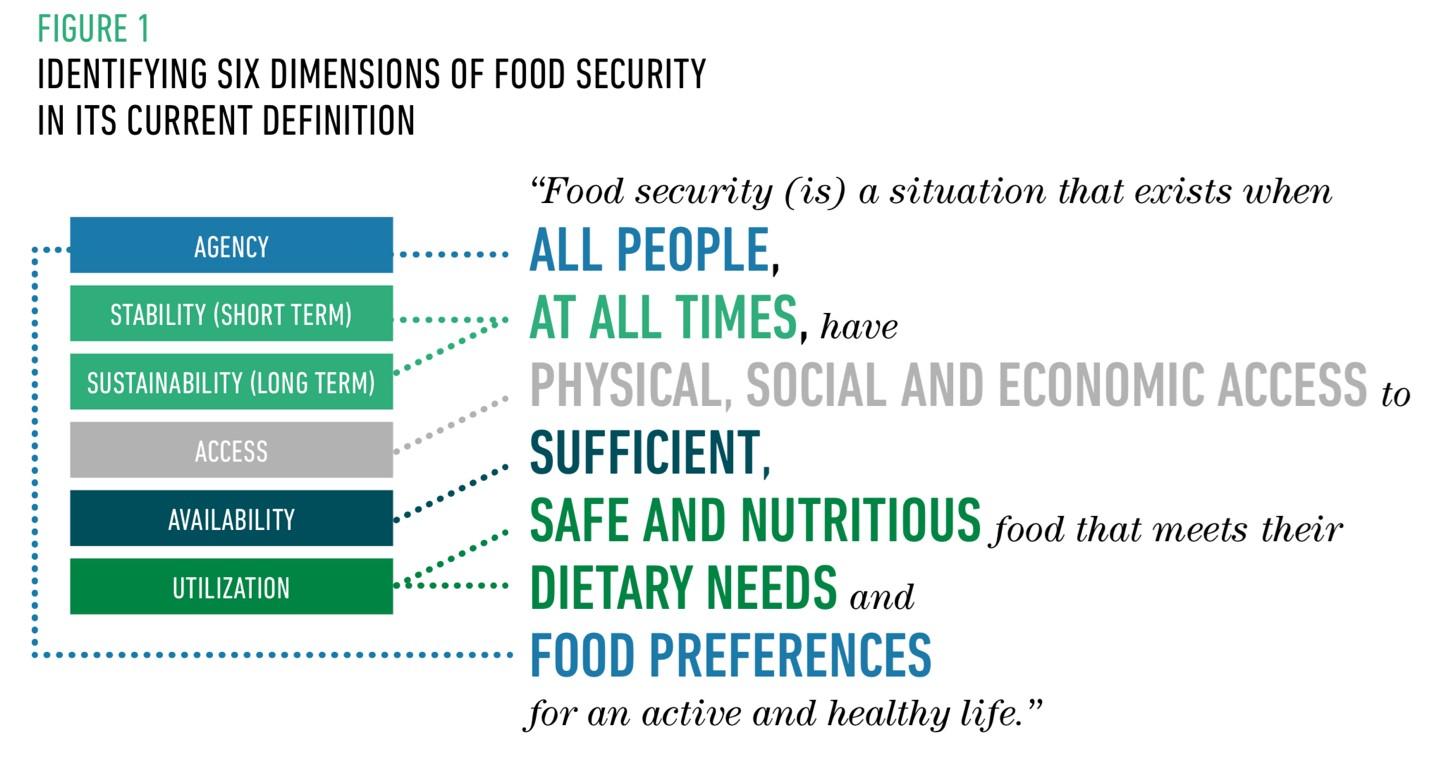Introduction
ANH Academy’s Research Community on Food Access brings together researchers, students, and practitioners from around the world to share their work, learn from each other, and catalyze breakthroughs. But what is meant by the term food access?
Food access can be defined as the factors that influence an individual or household’s ability to acquire food for an adequate diet, while not compromising on other basic needs1. We often categorize these factors within economic, physical, and social access.
A bit of history:
In 1983, FAO added food access to its definition of food security, where previous definitions focused on sufficient food availability or supply2. The 1996, the Rome Declaration on World Food Security further expanded this definition to include four main dimensions: physical availability, economic and physical access, food utilization, and stability of food intake3. Under a broader framework, the Committee on World Food Security’s High Level Panel of Experts on Food Security and Nutrition introduced a six-dimensional definition of food security in 2020, which included a social component to food access.

Source: HLPE. 2020. Food security and nutrition: building a global narrative towards 2030. A report by the High Level Panel of Experts on Food Security and Nutrition of the Committee on World Food Security. Rome.
Economic access
Economic access to food means a person has sufficient financial means to purchase food products, either in a formal or informal food economy. Food products include more than the foods themselves; they include the necessary materials to cook and consume food such as cooking equipment and fuel (e.g., pots, utensils, ovens, stoves, wood). High food prices or insufficient income can reduce economic access, while higher earnings or safety nets and other social protection programs can improve economic access. For example, the Productive Safety Net Program (PSNP) in Ethiopia, started in 2005, delivers cash or food transfers to food insecure and low-income households for six months each year, either through public works or unconditional, direct transfers for those unable to work4.
Physical access
Physical access refers to one’s proximity to food sources. Economic access does not guarantee food access—people who have enough money to purchase food may not live close to food markets or may lack access to transportation needed to reach them. Increasing food market proximity, such as through territorial markets that allow smallholder farmers and consumers retail outlets for buying and selling diverse and fresh foods, promotes physical access to healthy diets5.
Social access
Social access to food refers to the social, cultural, and political factors that influence an individual’s ability to acquire foods. For example, cultural norms may dictate that only certain individuals are expected or allowed to acquire and prepare food, which may limit access. Geopolitics and domestic policies also play a role in social access. Policies may limit individuals from accessing food or social protection programs based on certain demographics, such as ethnicity or political affiliation. For example, the withholding of food aid by the Syrian government throughout Syria’s long civil war severely limited food access for hundreds of thousands of Syrians as a means of political control6.
What do you think? Comment below!
- How do you define food access in your research?
- Are there components of food access that you would have included in this blog?
- Food access is often contextualized within the six dimensions of food security. Are there other dimensions missing from the current definition?
References:
- HLPE. 2020. Food security and nutrition: building a global narrative towards 2030. A report by the High Level Panel of Experts on Food Security and Nutrition of the Committee on World Food Security. Rome.
- FAO. 1983. World Food Security: a Reappraisal of the Concepts and Approaches. Director General’s Report. Rome.
- HLPE. 2020. Food security and nutrition: building a global narrative towards 2030. A report by the High Level Panel of Experts on Food Security and Nutrition of the Committee on World Food Security. Rome.
- IFPRI Ethiopia. “Productive Safety Net Program (PSNP).” IFPRI Ethiopia, essp.ifpri.info/productive-safety-net-program-psnp/
- FAO. “Territorial Markets Initiative.” Food and Agriculture Organization of the United Nations, www.fao.org/nutrition/markets/territorial-markets-initiative/en/
- Sengupta, Somini, and Nick Cumming-Bruce. “As Aid Reaches Syrians, U.N. Chief Says Withholding Food Is a War Crime.” The New York Times, The New York Times, 14 Jan. 2016, www.nytimes.com/2016/01/15/world/middleeast/syria-aid-madaya.html.

